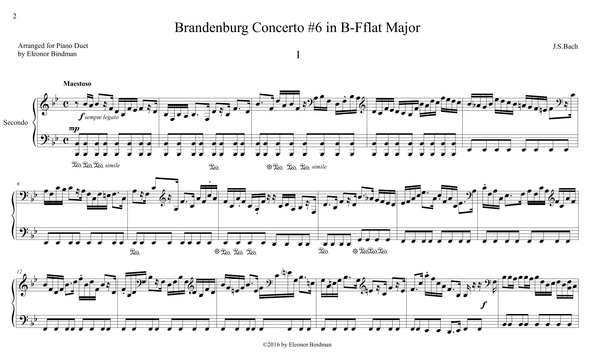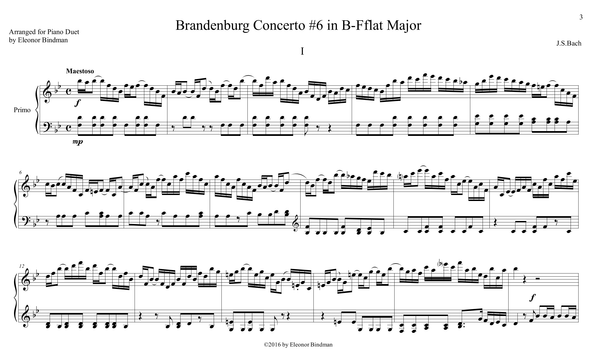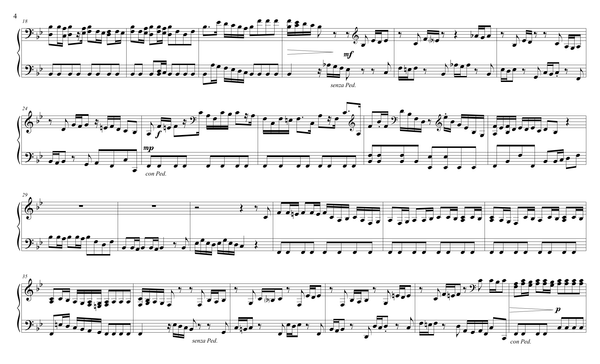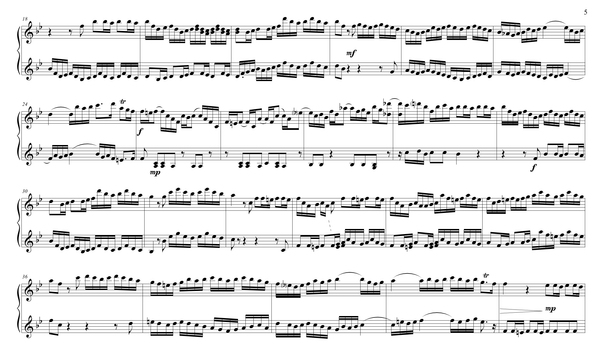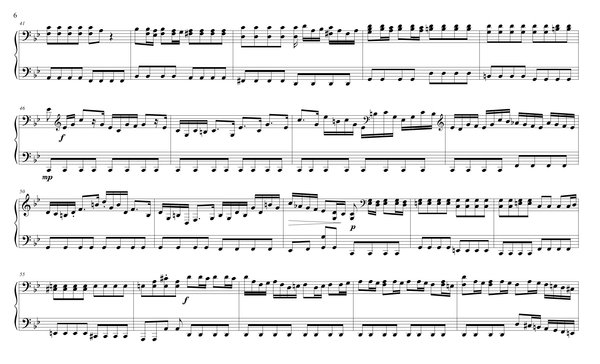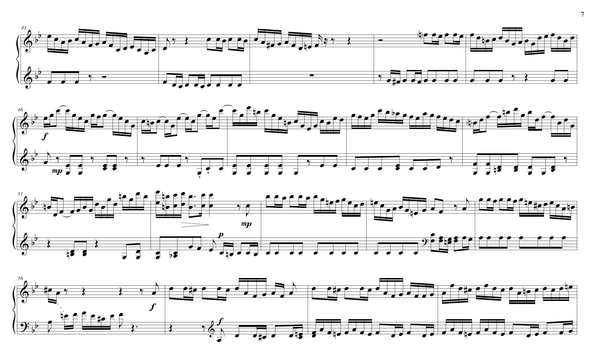J.S. Bach: Brandenburg Concerto No. 6, BWV 1051 – arranged for piano duet by Eleonor Bindman (GPC043)
Sheet music edition
33 pages
for piano duet
Recording
Unlike the only published piano duet arrangement by Max Reger, which has serious performance limitations, Eleonor Bindman’s new transcription of the Brandenburg Concertos highlights their polyphony, imagining how Bach might have distributed the score if he had created four-part inventions for piano duet. With an equal partnership between the two instrumentalists, using the modern piano’s full potential to convey the unique scoring and character of each work, the concertos are ordered to create an engaging listening sequence.
Perhaps the most radical, yet to me the most successful change is the transformation of the first movement of Concerto No. 6 in B flat major, scored for two solo violas and lower strings with harpsichord. This concerto is the least popular because its overall low register lacks brightness and variety. The opening movement is usually played at a fast pace (even though Bach provided no tempo indication) and since the canon of violas is written in the same register as the accompaniment, the impression is unremarkable. This canon is impossible to realise in the same register on the piano. After the voices were separated by an octave, the lovely outline of the theme revealed itself and took on a gravity almost reminiscent of Brahms, dictating a slower tempo. The pedal, a device entirely avoidable when playing Bach, became indispensable here for creating the wonderful cushion of open chords. Finally, the key of B flat major, not the best for strings, sounds divine on the piano, bringing forth this movement’s truly majestic essence.







